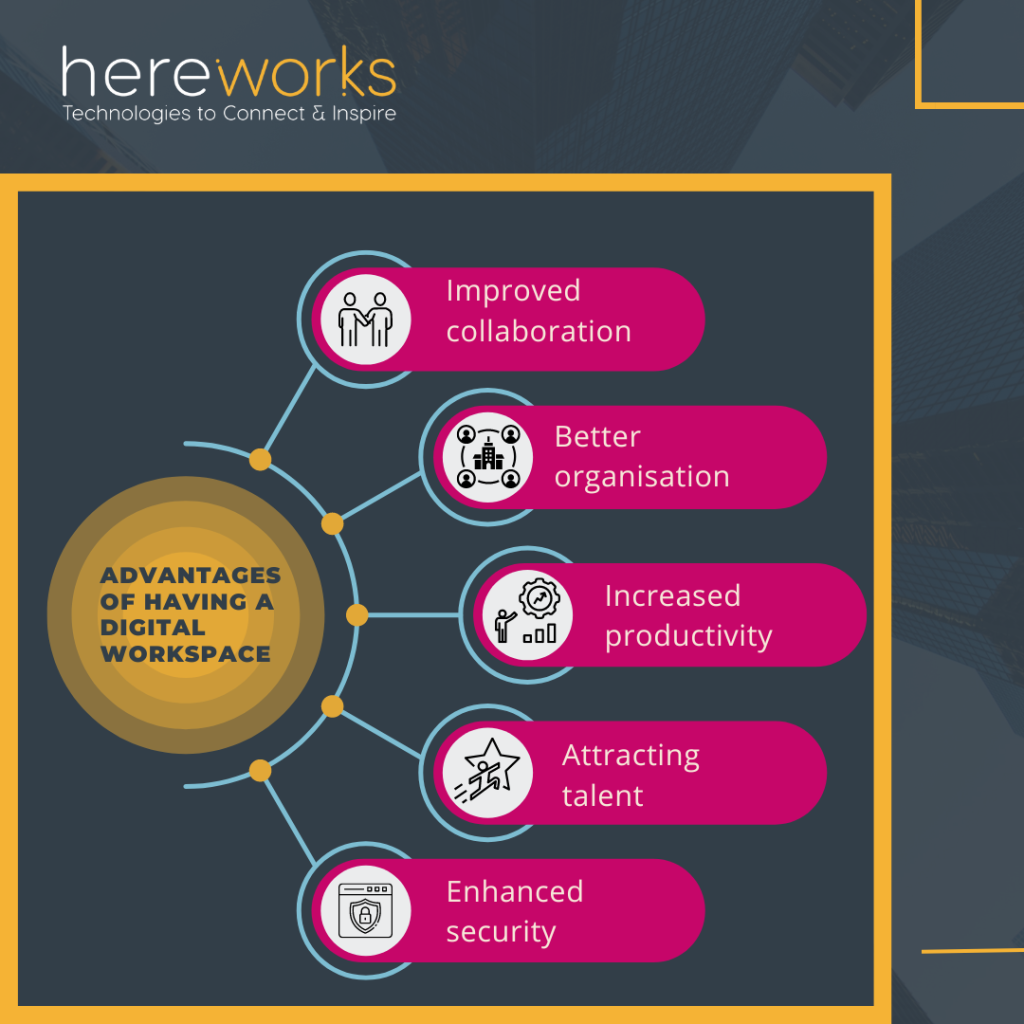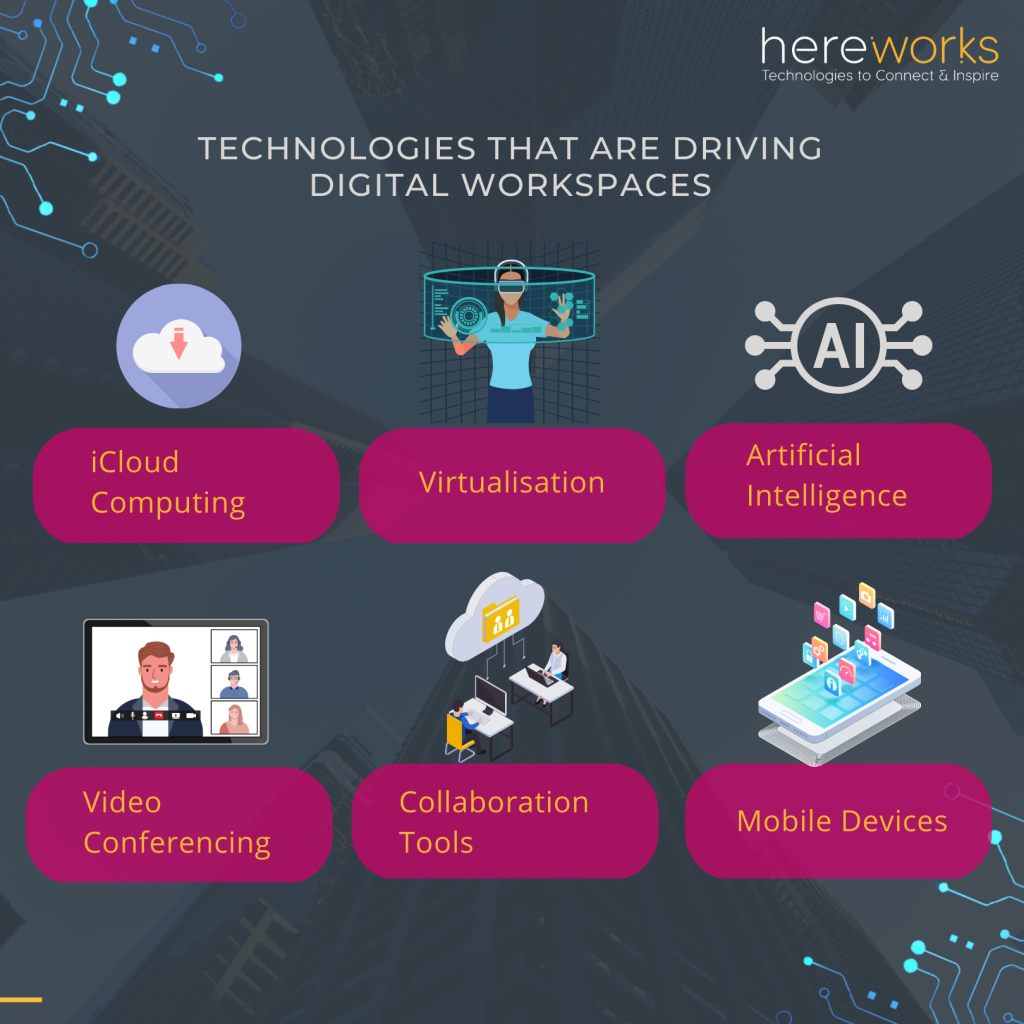
AV Technologies’ Role in the Future of Digital Workplaces
Gradually, technology has influenced how employees interact with one another in the workplace, but it has shifted gears and is speeding up rapidly. Audio Visual technology has played a pivotal role in the evolution of digital workspaces. The focus is now on providing seamless user experiences, security, and innovation while enabling hybrid work.
Audio Visual technology is becoming increasingly important in the workplace as it facilitates communication, collaboration, and productivity. In the future, we expect to see more advanced technologies, such as virtual and augmented reality. Smart lighting and acoustics, video displays integrated with the workspace, and huddle spaces for small groups are already seen in workplaces. Audiovisual technology will continue to play a critical role in shaping the future of work.
Technology and Workspace Evolution.
The evolution of the workspace is a result of the changing nature of work and the increasing role of technology in our lives. Each stage builds on the previous one, creating a more flexible, collaborative, and efficient work environment.
Three main phases of workspace evolution:

1. Traditional workspace: This is the earliest stage of workspace evolution and refers to a physical office space where employees work on-site, with a clear divide between work and personal life. Typically, this workspace is characterised by individual offices or cubicles, with limited technology and communication options.
2. Internet-enabled workspace: The second stage of workspace evolution involves adopting remote work options. This stage is characterised by a more flexible work environment, where employees can work from home or other remote locations. Email, and instant messaging, became more common to facilitate communication and collaboration.
3. Digital Workspace: The third stage of workspace evolution features a more collaborative and flexible work environment, where employees can choose where and how they work. Where open floor plans, hot desking, and collaborative workspaces become more common, technology such as cloud computing and mobile phones’ enable employees to work from anywhere. Integrating new technology into the physical workspace creates a more intelligent and data-driven environment. This stage is evolving to a more connected and efficient workspace through automation, Internet of Things (IoT) devices, and artificial intelligence.
What are the advantages of having a digital workspace?

1. Improved collaboration: With a digital workspace, team members can collaborate on projects in real-time, regardless of location, helping increase productivity and reduce travel costs.
2. Better organisation: Digital workspaces can help to organise all aspects of a project, including communication, task management, and document sharing. It can help to ensure that everyone on the team is on the same page and working towards the same goals.
3. Increased productivity: By providing employees with an integrated location for communication, file sharing, and project management tools, digital workspaces can help to streamline workflows and increase overall productivity.
4. Attracting talent: A company that invests in technology is likely to be innovative and tech-savvy, which attracts better candidates. It provides flexibility to work from anywhere, whether that’s from home, a coffee shop, or a co-working space. This level of flexibility can be a draw for talent, especially those who value work-life balance or who have other obligations that make it difficult to commute to an office every day.
5. Enhanced security: Digital workspaces are configured with robust security measures to protect sensitive information, which helps to reduce the risk of data breaches and other security incidents.
Digital workspaces can help businesses to work more efficiently, increase collaboration and communication, and improve overall productivity.
What are the technologies that are driving digital workspaces?

1. Cloud Computing: The ability to store, access and share data and applications over the internet enables workers to collaborate remotely and access their work from anywhere with an internet connection.
2. Virtualisation: This allows multiple virtual machines to run on a single physical machine, enabling workers to access multiple operating systems and applications on a single device.
3. Artificial Intelligence (AI): AI is increasingly used in digital workspaces to automate repetitive tasks, provide recommendations, and improve productivity.
4. Video Conferencing: Video conferencing tools have become essential for remote work, enabling workers to communicate face-to-face with colleagues, clients, and customers from anywhere in the world.
5. Collaboration Tools: These tools, such as instant messaging, shared documents, and project management platforms, allow teams to share information seamlessly in real time.
6. Mobile Devices: Smartphones and tablets have enabled workers to access their work and communicate with colleagues from anywhere, increasing productivity and responsiveness.
Audio Visual digital workspaces are essential to businesses now, with hybrid work commonplace. Video conferencing, virtual and augmented reality, digital signage, and interactive displays enable real-time collaboration and communication between remote workers and those in the physical office, allowing businesses to operate more efficiently and effectively.
Hereworks partners with the worlds leading technology developers to ensure we can offer our client’s the best solutions to meet their needs. We are constantly learning with our partners, driving innovation in the industry and establishing ways to work with their latest products.
At Hereworks, we help businesses optimise their digital workspaces as AV system integrators, from AV technology solutions to workspace design and consulting. Hereworks can help create a more connected, collaborative, and efficient digital workspace that enables employees to work more effectively from anywhere.
Are you looking to design a digital workspace?
We are always happy to help design innovative ways of using AV technology to make the workplace more collaborative. Just ask us!
Categories
Share this article
Feature Posts





